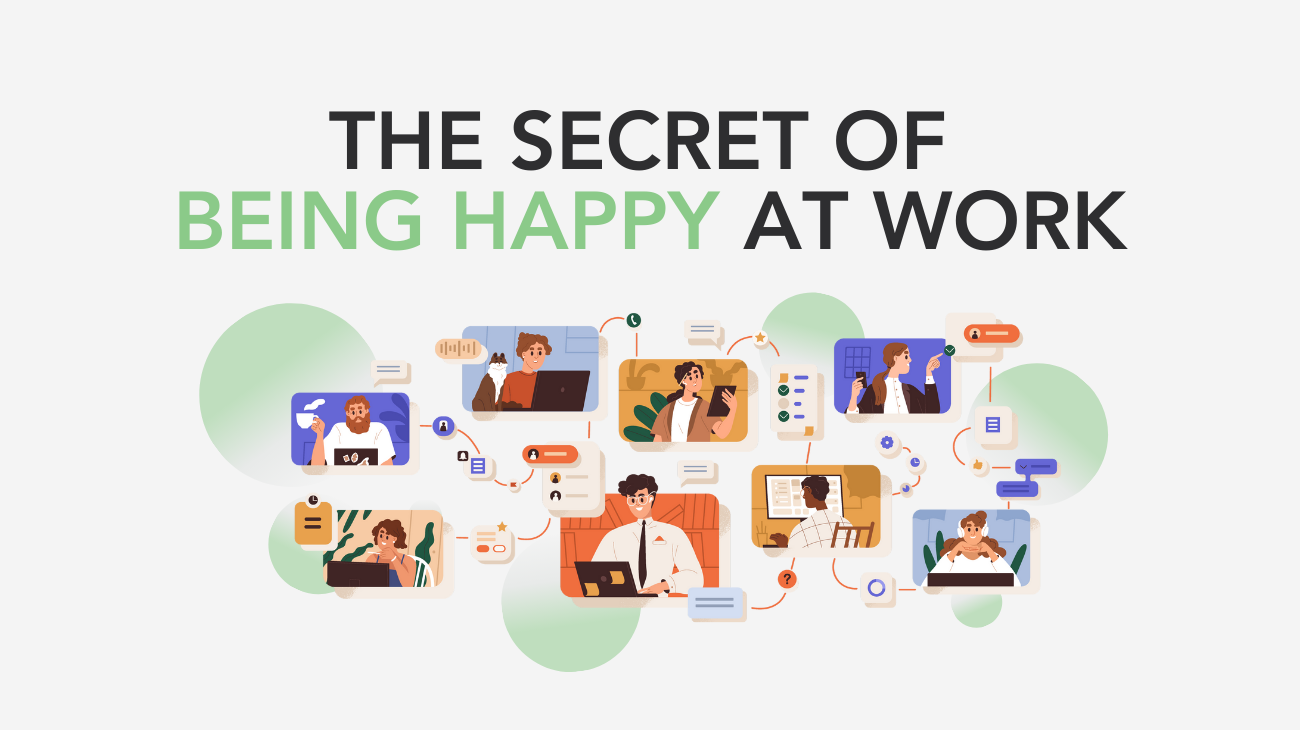The Secret of Being Happy at Work
Did you know 85% of employees worldwide are not fully engaged in their jobs? This can really hurt their happiness and how well they do their work. So, what makes a workplace happy? A happy workplace is key for businesses to make their employees happier, work better, and stay longer.
A vibrant, modern office space with an abundance of natural light streaming through large windows. Employees gather around a long, communal wooden table, engaged in lively discussions, exchanging ideas, and collaborating on projects. Ergonomic chairs in a mix of colors and sleek, minimalist desks create a harmonious, productive environment. Potted plants and artwork adorn the walls, adding a touch of warmth and creativity. The atmosphere is one of camaraderie, with employees smiling and laughing, fostering a positive, uplifting workplace. Soft, diffused lighting from overhead fixtures and a high ceiling give the space an airy, open feel. The overall impression is one of a happy, dynamic workplace that inspires and motivates its occupants.
Finding out how to make a workplace happy can help businesses create a better place to work. It’s about growing, working together, and feeling good about your job. To learn more about making your workplace happy, call us at +923361996234 or visit our website.
Introduction to Happy Workplace
A happy workplace is where everyone feels important, supported, and can do their best. It’s a place that cares about people’s well-being, helps them grow, and encourages teamwork. By making your workplace happy, you can make your employees happier, more productive, and less likely to leave.
Key Takeaways
- Creating a happy workplace is essential for businesses to improve employee satisfaction and increase productivity.
- A happy workplace is a workplace that prioritizes employee well-being and provides opportunities for growth and development.
- Understanding what is the secret of a happy workplace can help businesses identify areas for improvement and develop strategies to increase employee happiness and engagement.
- A happy workplace can have a direct impact on the bottom line, reducing turnover rates and improving employee retention.
- By exploring the concept of a happy workplace, businesses can create a positive work environment that fosters growth, collaboration, and job satisfaction.
Understanding What Makes a Happy Workplace
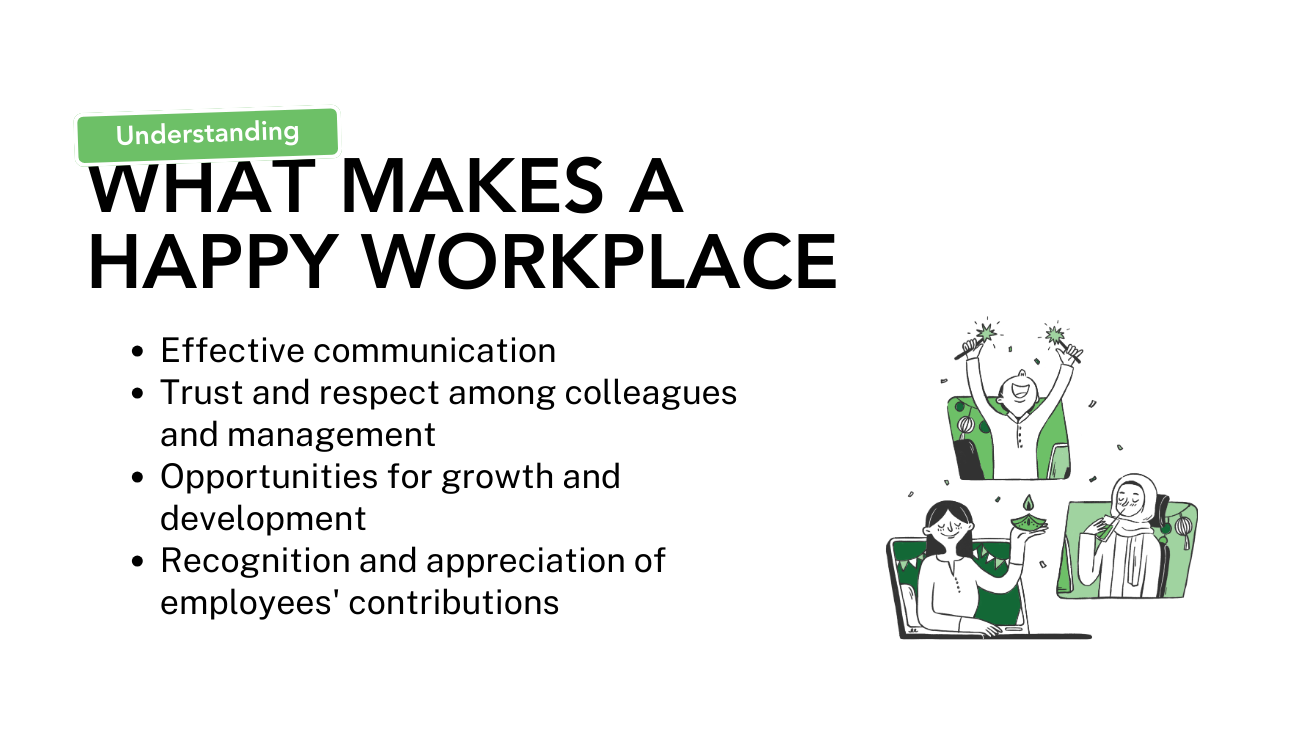
A happy workplace starts with a positive workplace culture and employee satisfaction. It’s key to know what makes workers happy. This means looking at what makes a work place good and how happiness helps get things done.
Important things that shape workplace culture and employee satisfaction include:
- Effective communication
- Trust and respect among colleagues and management
- Opportunities for growth and development
- Recognition and appreciation of employees’ contributions
When these are in place, they make a big difference. They improve employee satisfaction and workplace culture. A good work place makes people more productive, keeps them longer, and makes them more motivated.
By focusing on workplace culture and employee satisfaction, companies can make a happy and healthy work place. This benefits both the workers and the company.
The Role of Company Culture in Employee Happiness
A positive workplace environment is key for employee happiness. Company culture is a big part of this. When employees feel valued and supported, they tend to be happier and more engaged. This leads to better productivity and teamwork, making team collaboration more effective.
Important parts of a good company culture include open communication, recognizing employees, and chances for growth. By focusing on these, businesses can make a workplace environment that supports employee well-being. This can be done through regular feedback, training, and team activities that boost team collaboration and friendship.
Also, a positive culture helps attract and keep the best employees. People want to work for places that care about their happiness. By focusing on employee happiness, businesses gain many benefits. These include higher productivity, better morale, and a strong position in the job market.
Creating Your Personal Happiness Strategy at Work
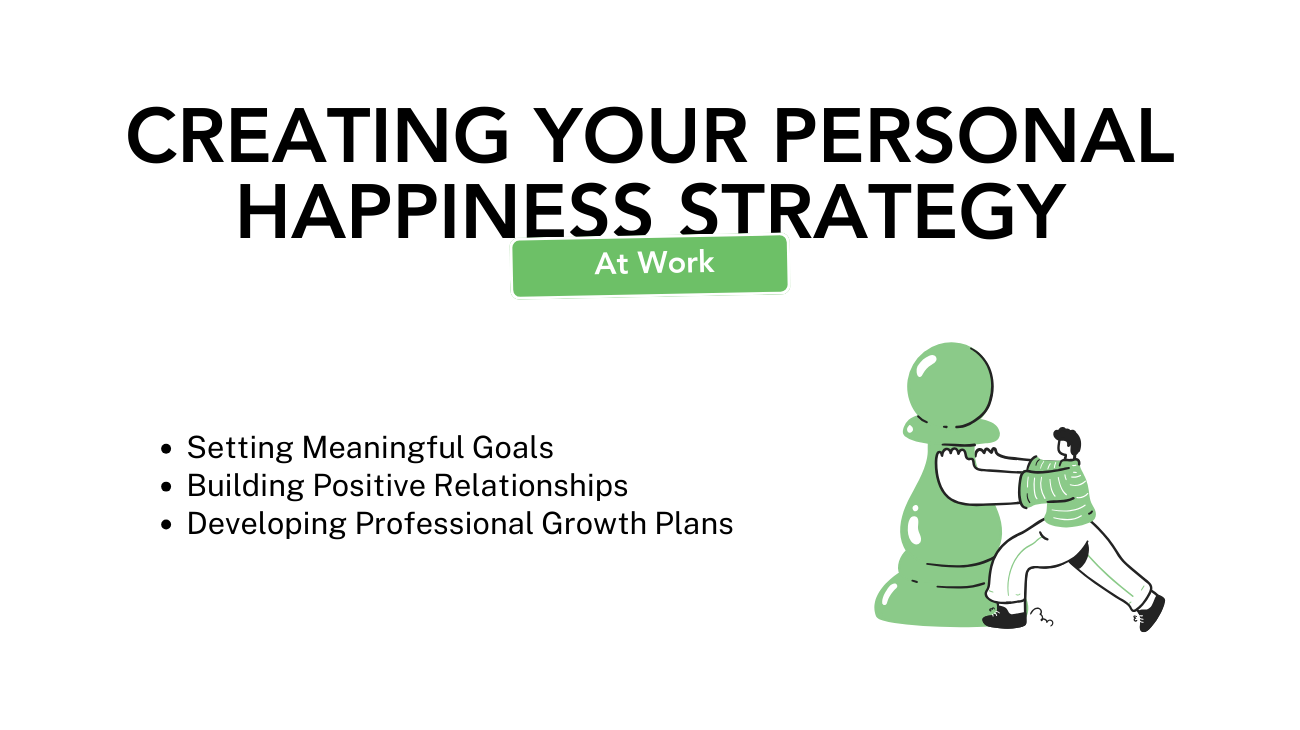
Creating a personal happiness plan at work is key for feeling good and happy in your job. A positive work culture is important because it helps people do their best and grow. When companies focus on employee well-being, they make a happy and productive place to work.
Setting Meaningful Goals
Setting goals that mean something to you is important. This helps you find your purpose and direction. Here’s how to do it:
- Know your strengths and weaknesses
- Set goals that are realistic and reachable
- Make a plan to reach those goals
Building Positive Relationships
Good relationships with coworkers and bosses are key to a happy work place. Here’s how to build them:
- Talk clearly and listen well
- Show respect and understanding
- Join in team activities
Developing Professional Growth Plans
Having a plan for your career growth is important for job happiness. Here’s how to make one:
- Find areas where you can get better
- Plan how to improve yourself
- Ask for feedback and support from others
What is the Secret of a Happy Workplace?
A happy workplace is where employees feel valued and supported. It needs a positive environment, work-life balance, and chances for growth. When work and personal life are balanced, employees are more motivated and productive.
Employee engagement is key to a happy workplace. This comes from regular feedback, recognition, and letting employees help make decisions. By focusing on employee engagement, companies can build a supportive space for teamwork and creativity.
Here are some ways to make a workplace happy:
- Encourage open communication and feedback
- Offer chances for growth and development
- Build a sense of community and teamwork
- Support work-life balance with flexible work options
By using these strategies, businesses can make a workplace that’s happy and productive. This benefits both employees and the company.
Physical Workspace Design and Its Impact on Mood
A well-designed physical workspace can make employees feel happy, motivated, and productive. The layout and features of the workspace can either help or hurt employee well-being. It’s key to think about how physical space affects mood and workplace culture.
When designing a physical workspace, several factors are important for happiness and productivity. These include:
- Ergonomic considerations, such as adjustable desks and comfortable seating, to reduce physical strain and discomfort
- Natural light and environmental factors, like plants and artwork, to create a welcoming atmosphere
- Personal space optimization, including private areas for focused work and collaborative spaces for team interaction
By adding these elements, businesses can make a physical space that supports employee happiness and well-being. A happy workplace is where employees feel valued, supported, and empowered to do their best. A well-designed physical space is a big part of this.
In conclusion, the physical workspace is key in shaping employee mood and workplace culture. By focusing on ergonomic considerations, natural light, and personal space, businesses can create a happy workplace. This supports employee well-being and productivity, leading to success and growth.
The Power of Recognition and Appreciation
Recognition and appreciation are key to a happy workplace. They boost employee satisfaction and team collaboration. By thanking and rewarding employees, companies can make work a better place. This leads to more productivity and happiness at work.
Here are some ways to show appreciation at work:
- Regular feedback and performance evaluations
- Reward systems, such as bonuses or promotions
- Celebrations and team-building activities
Using these methods, companies can build a culture of recognition. This leads to happier employees and better teamwork. A happy and productive team is a successful team.
Building Meaningful Workplace Relationships
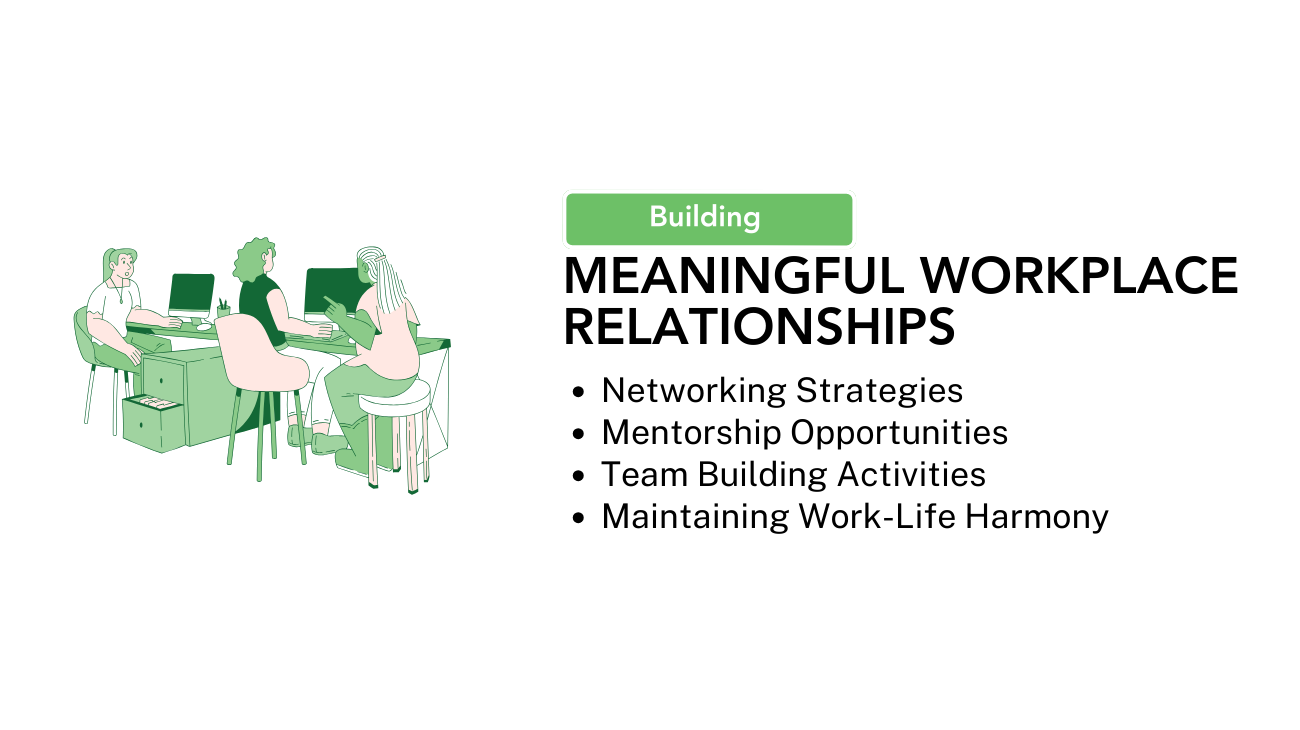
Creating strong workplace relationships is key to a positive work culture that cares for employee well-being. When people feel connected at work, they tend to be more engaged and productive. A positive work culture makes everyone feel like they belong, which is vital for happiness and keeping employees around.
Networking Strategies
- Attend company-sponsored events and conferences to meet colleagues and industry leaders
- Join professional organizations and networking groups to expand your network
- Volunteer for cross-functional projects to work with different teams and departments
Mentorship Opportunities
Mentorship offers valuable guidance and support, helping employees grow and advance. It also builds a sense of community and connection, which is essential for a positive work culture.
Team Building Activities
Team building activities help build trust and improve communication. They include social events, team outings, and volunteer work. These activities create a sense of camaraderie and shared purpose among employees.
Maintaining Work-Life Harmony
Keeping a good balance between work and personal life is key for employee happiness and productivity. When workers can manage their work and personal life well, they tend to be more engaged and motivated. This leads to better employee engagement. Companies can help by allowing flexible hours, remote work, and wellness programs.
Here are some ways to support work-life balance and employee engagement:
- Offering flexible scheduling and telecommuting options
- Providing employee wellness programs and resources
- Encouraging employees to take breaks and use vacation time
- Supporting employees’ personal and professional development
By focusing on work-life balance and employee engagement, companies can build a positive work environment. This benefits both employees and the company. It can lead to happier workers, less turnover, and better overall well-being.
Stress Management Techniques for the Modern Professional
Managing stress is key to a happy workplace. When employees handle stress well, they work better, get along with colleagues, and enjoy their jobs more. So, what is the secret of a happy workplace? It’s about giving employees the tools to manage stress.
Some important stress management techniques include:
- Mindfulness practices, such as meditation and deep breathing
- Time management strategies, such as prioritizing tasks and taking regular breaks
- Physical activity, such as walking or yoga
By using these techniques daily, employees can lower their stress and feel better. This makes for a happier workplace, where everyone is engaged, motivated, and productive.
A cozy and vibrant office scene, with sunlight streaming through large windows, illuminating a spacious, open-plan workspace. The walls are adorned with vibrant abstract paintings, and plants add a lush, natural touch. In the foreground, a group of colleagues are engaged in a lively discussion, their faces animated and their body language relaxed. In the middle ground, a few individuals are working collaboratively at a long wooden table, their expressions focused yet calm. The background features a small lounge area with comfortable sofas and a well-stocked bookshelf, creating a sense of balance and tranquility. The overall atmosphere conveys a sense of productivity, creativity, and a positive, supportive work culture.
Employers also have a part to play in making a happy workplace. They can offer stress management training, mental health resources, and support for work-life balance. This helps employees manage stress and enjoy their work more.
The Impact of Leadership on Workplace Happiness
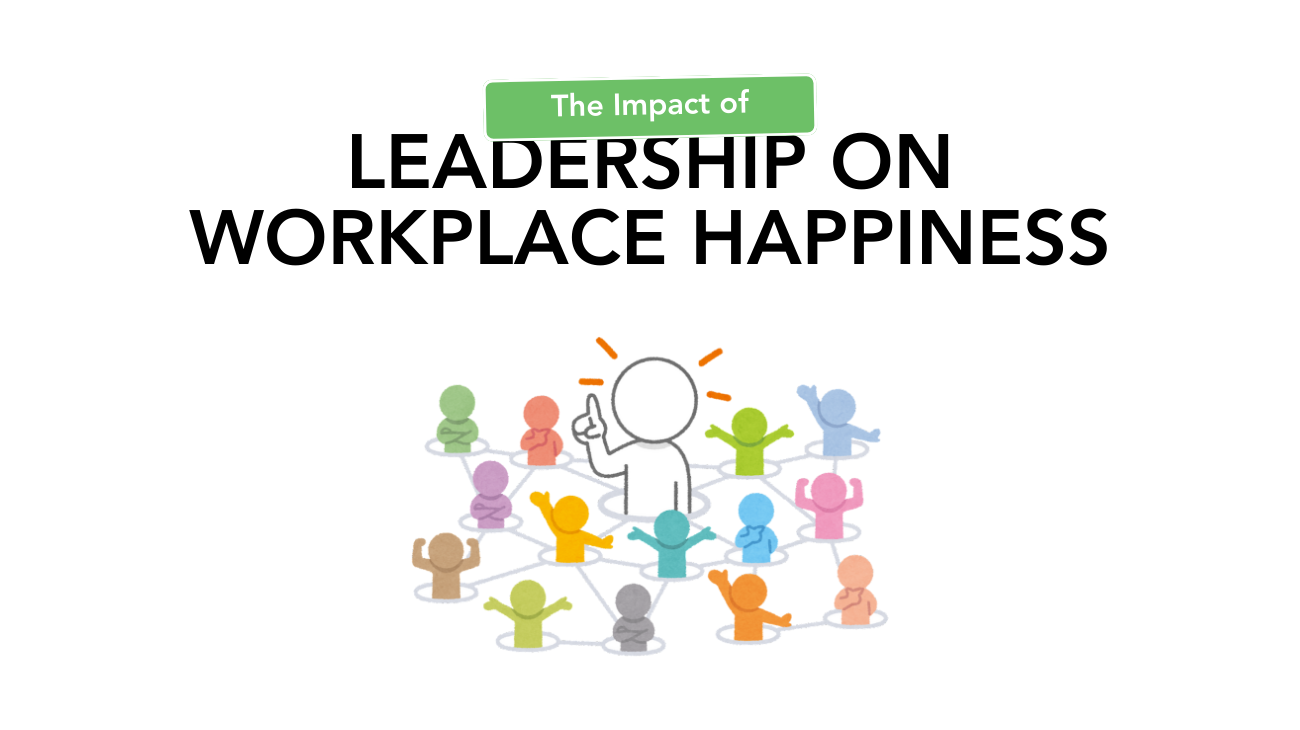
Leadership greatly affects the workplace environment. It shapes how happy employees are. A positive leader creates a space where everyone feels valued and respected.
A good workplace environment boosts well-being and job happiness. Leaders can make this happen by supporting teamwork. They do this through team activities, shared projects, and open talks.
- Encourage team collaboration and teamwork
- Make sure everyone can share their thoughts and ideas
- Give praise and rewards for good work
- Help employees grow and learn new things
Using these methods, leaders can make a workplace where everyone is happy. This leads to better teamwork and more job satisfaction.
Creating Opportunities for Growth and Development
A positive work culture is key to a happy workplace. It supports employee well-being. This is achieved by giving chances for growth and development. This includes skill enhancement programs, career advancement pathways, and personal development plans.
Ways to offer these opportunities include:
Training and development programs that match the company’s goals
Mentorship opportunities with experienced professionals
Encouraging employees to take on new challenges
By doing this, companies can foster a positive work culture. This culture supports employee well-being, leading to higher job satisfaction and productivity. It also helps keep employees, reducing turnover and boosting the company’s success.
Fostering Innovation and Creativity
To make a workplace happy, we need to encourage innovation and creativity. This happens when we support a good work-life balance and engage employees. When people feel valued, they are more likely to be motivated and creative.
There are several ways to boost innovation and creativity. For example, giving employees autonomy and flexibility helps a lot. This means allowing them to work in ways that suit them best and supporting their growth.
Organizations can also promote work-life balance and engagement by:
Encouraging breaks and self-care
Offering chances for socializing and teamwork
Recognizing and rewarding employees’ achievements
By focusing on work-life balance and engagement, companies can create a supportive environment. This leads to more productivity, happiness, and overall well-being.
A vibrant and dynamic office scene, captured through a wide-angle lens. In the foreground, a person sits at a desk, deep in thought, surrounded by a cacophony of ideas and concepts represented by colorful sticky notes and sketches. The middle ground features a group of co-workers engaged in a lively discussion, gesturing animatedly as they brainstorm new solutions. In the background, a large window overlooking a bustling cityscape, with soft, diffused natural light streaming in, creating a sense of openness and inspiration. The overall atmosphere is one of focus, collaboration, and a harmonious work-life balance, where creativity and innovation thrive.
Building a Supportive Team Environment
A happy workplace starts with trust, respect, and open talk. To build a supportive team, focus on a positive culture. This means teamwork and collaboration through regular meetings and brainstorming.
When employees feel valued and supported, they’re happier and more productive. A positive culture also cuts down on conflict and boosts communication. This makes the workplace better for everyone.
Collaborative Work Practices
Regular team meetings to discuss projects and goals
Brainstorming sessions to encourage creativity and innovation
Cross-functional teams to promote collaboration and knowledge-sharing
Conflict Resolution Strategies
Handling conflicts well is key to a positive work culture. Use clear communication, training, and open dialogue to solve issues.
Team Communication Tools
Tools like project management software and instant messaging apps help teams work together better. They reduce misunderstandings and speed up responses, making work more efficient.
Implementing Wellness Programs and Initiatives
Creating a happy workplace is key, and wellness programs play a big role. They help reduce stress, boost morale, and make employees more productive. Important parts of these programs include mental health support, chances to stay active, and healthy food choices.
Wellness programs can make a big difference. They help employees feel better and work better together. This leads to happier employees, better teamwork, and a more positive workplace.
Wellness programs offer many benefits. They can make employees happier and reduce turnover. They also improve teamwork and productivity. Plus, they make your company look better to job seekers.
By focusing on employee well-being, companies can build a supportive work environment. This environment encourages teamwork and boosts employee happiness. It can also make your business more successful and productive.
Conclusion: Transforming Your Workplace into a Haven of Happiness
Creating a happy workplace is more than just a goal. It’s a journey that needs a mix of efforts. By focusing on employee well-being and building a positive culture, companies can make their workplaces joyful.
Understanding what makes employees happy is key. This includes setting meaningful goals, providing growth chances, and managing stress. A supportive team atmosphere helps everyone work better together. This leads to more productivity and success.
Creating a happier workplace is a continuous effort. It needs dedication and a desire to always get better. By following these tips, you can make your workplace a place where people excel and grow.
For more information, please contact us at +923361996234 or visit our website at https://www.ms9consultingltd.com.

